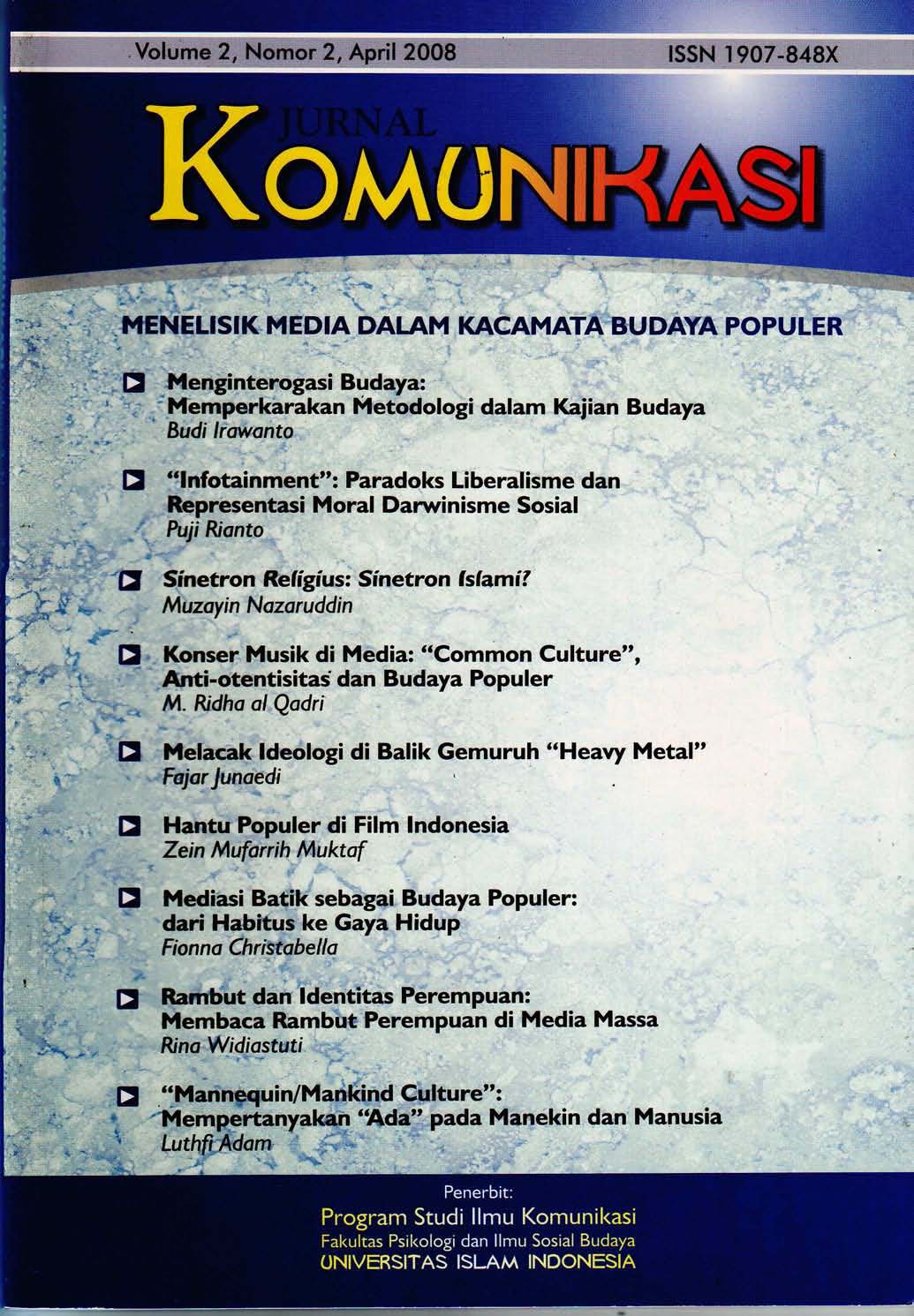Main Article Content
Abstract
In 2005-2007, Indonesian electronic cinemas (soup operas) full of religious- mystique contents. This genre usually named as religious or Islamic electronic cinema. These electronic cinemas are popularly considered representing religiosity and Islam. So, the question will be answered by this study is: in these electronic cinemas, what signifying practices which considered as the representation of religiosity and Islam? Answering this question, author applied Barthes's semiotics. Some research outcomes were resulted. First, there were more than 44 titles of religious electronic cinemas during 2005-2007. Second, three categories of these cinemas: the story of sinner which being tortured, the story of the successful tough, and the story the sinner which repent. Third, four signifying practices used to show that the content of these electronic cinemas are matching with Islamic doctrine: the titles use Islamic idioms, the resource of stories claimed as fact, use popular Islamic preachers, the narrative is Islamic sermon.
Article Details
Authors who publish with this journal agree to the following terms:
- Authors retain copyright and grant the journal right of first publication with the work simultaneously licensed under a Creative Commons Attribution License that allows others to share the work with an acknowledgement of the work's authorship and initial publication in this journal.
- Authors are able to enter into separate, additional contractual arrangements for the non-exclusive distribution of the journal's published version of the work (e.g., post it to an institutional repository or publish it in a book), with an acknowledgement of its initial publication in this journal.
- Authors are permitted and encouraged to post their work online (e.g., in institutional repositories or on their website) prior to and during the submission process, as it can lead to productive exchanges, as well as earlier and greater citation of published work (See The Effect of Open Access).
